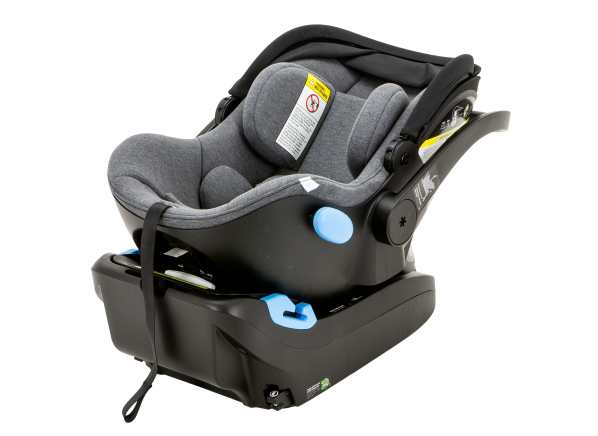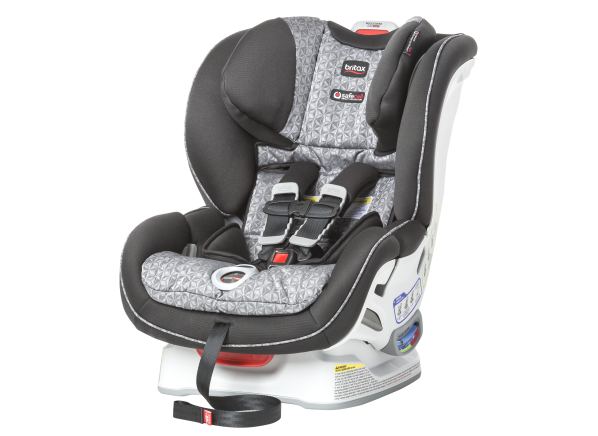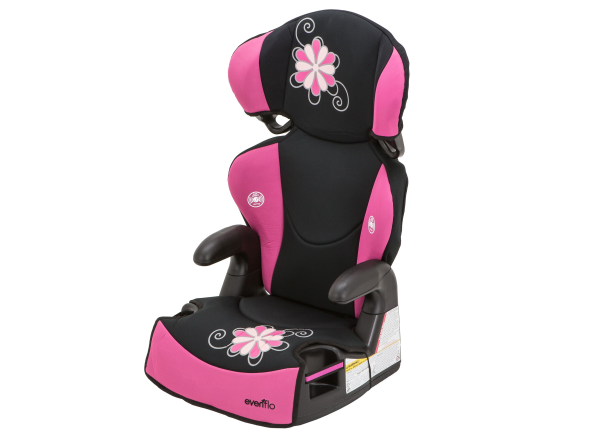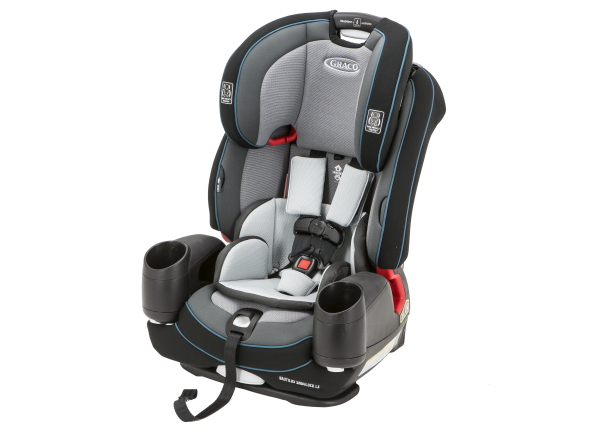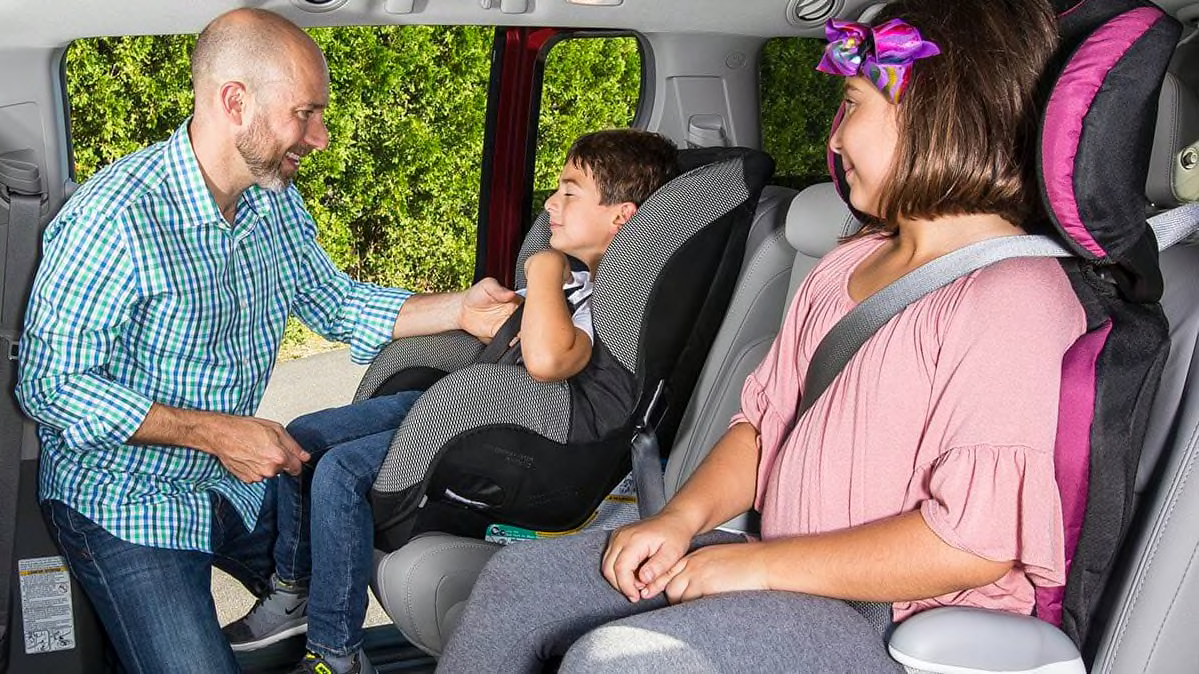
A child car seat is one of the most important purchases parents make, and Consumer Reports has long been the go-to place for advice and information on which ones are right for your child and your vehicle.
CR has been working for decades to make car seats safer for transporting children. Below are details about the rigorous methods we use to assess the seats we test.
See our ratings of infant car seats, convertible car seats, booster seats, and all-in-one car seats.
Creating the Tests
Consumer Reports introduced its latest crash test protocol in 2014. CR studied research on pediatric biomechanics and child-injury patterns in vehicle crashes. We also analyzed crash-test videos and data from crashes conducted by the National Highway Traffic Safety Administration (NHTSA) and Transport Canada. We conferred with other child passenger safety and automotive safety experts. And we reviewed our protocol with Priya Prasad, Ph.D., an expert in vehicle safety and injury biomechanics.
Our latest car seat ratings are based on tests conducted using our latest crash protocol at a contracted outside lab. We also perform in-house testing of how easily a seat can be securely installed in a variety of vehicles, and how easy a seat is to use.
We combined the results of those three tests to determine the overall rating, giving more weight to the combined scores of the fit-to-vehicle and ease-of-use testing than to the crash-test performance. That's because a seat can't provide optimal crash protection if it hasn't been properly installed or is being used incorrectly.
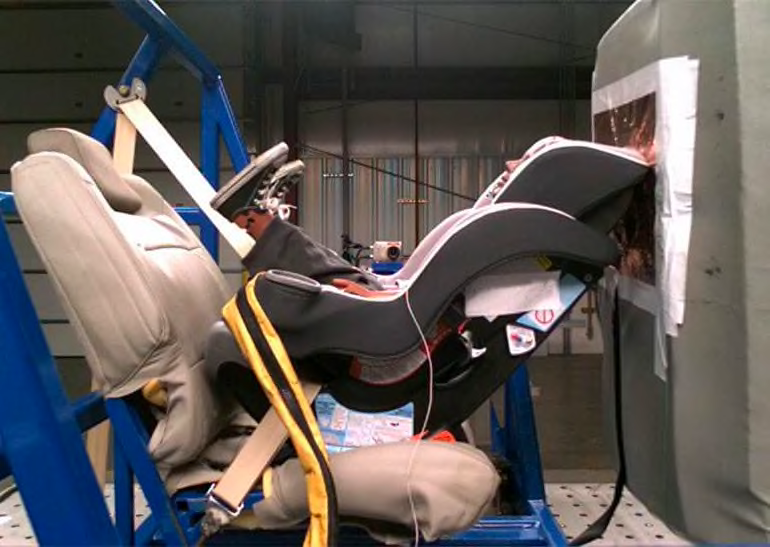
The Crash Test
For many years, Consumer Reports performed simulated frontal crash testing at 30 mph based on the criteria outlined in Federal Motor Vehicle Safety Standard 213 (FVMSS 213), which is NHTSA's standard for crash performance of child restraints (child car seats). Manufacturers self-certify that their car seats meet this federal standard.
Consumer Reports developed its own test protocol to provide consumers with comparative information on a car seat's potential to offer an extra margin of safety in certain crash conditions. We evaluate performance on a scale that ranks seats from those that have the least potential to offer that extra margin (these are rated as "basic") to seats that have the most potential ("best"). Our focus on that extra margin is based on the fact that any car seat sold in the U.S. already must provide an essential level of safety under the government standards it must meet.
To create our latest test, Consumer Reports considered real-world vehicle conditions and increased the speed of the simulated frontal impact test from 30 mph to 35 mph. Our test also includes installing the car seat on a test "bench" that uses the cushions and hardware from an actual vehicle seat. It also incorporates a surface to simulate the back of front-row seats, something present in all vehicles with at least two rows. Research shows that when children are injured in frontal crashes, it's most often because they have hit their heads on something in the vehicle, such as the back of the front seat.
To pass the current federal safety standard, car seats with load legs are tested without the load leg. However, we want to ensure that each seat is given its maximum benefit by implementing the use of the load leg in CR's tests. As these seats have become more commonplace, CR updated its crash test sled - the fixture that simulates crashes - to include a carpeted surface to better represent a vehicle floor and to allow the results to reflect the contribution of the load leg.
Our crash protection ratings are based on (a) injury criteria measured on standardized child-sized dummies generally used in this type of simulated crash testing, (b) direct contact of the dummy's head with the simulated front seatback, and (c) a seat's ability to remain intact during the course of testing.
Ease of Use
In addition to the outside lab crash testing, our certified child passenger safety technicians evaluate how easy the seats are to use. (We have four certified technicians on staff.) This is an important part of our testing, because ease of use and understanding the directions help consumers properly install the seats in their own vehicles.

What We Evaluate
- Product labels and instructions (including the availability of Spanish-language instructions).
- Seat weight (weight of the product).
- Assembly, if applicable. (Most infant seats require assembly of the sunshade canopies only.)
- Harness height adjustment.
- Harness tension adjustment.
- Crotch-strap adjustment, if applicable.
- Chest clip.
- Buckle closure.
- Installation features and use with LATCH and vehicle safety belts.
- Rear-facing model level indicators.
- Adjustment and access of top tether.
- Ease of attaching the carrier to the base.
- Care and cleaning of the seat.
Fit to Vehicle
The last piece of every car seat rating includes how well a seat fits in a variety of vehicles. We install all of the car seats in each unique rear seating position of five different vehicle types. These vehicles also include features that may make child seat installation a challenge based on our vehicle assessments. Our technicians follow the manufacturers' instructions carefully and make judgments based on how securely each seat could be installed.
Through this rigorous testing, each car seat is awarded an Overall Score based on a weighted combination of all three of these components.
The Best Car Seats
Below we highlight the best infant, convertible, booster, and all-in-one seats in our tests.
Best Infant Car Seat
Best Convertible Car Seat
Best Booster Seat
Best Toddler-Booster Seat
Best All-in-One Car Seat
How to Install a Car Seat
Child seats have come a long way over the years, but proper installation is key. On the "Consumer 101" TV show, Consumer Reports expert Jennifer Stockburger shows host Jack Rico what to do to keep little ones safe in a car.
















